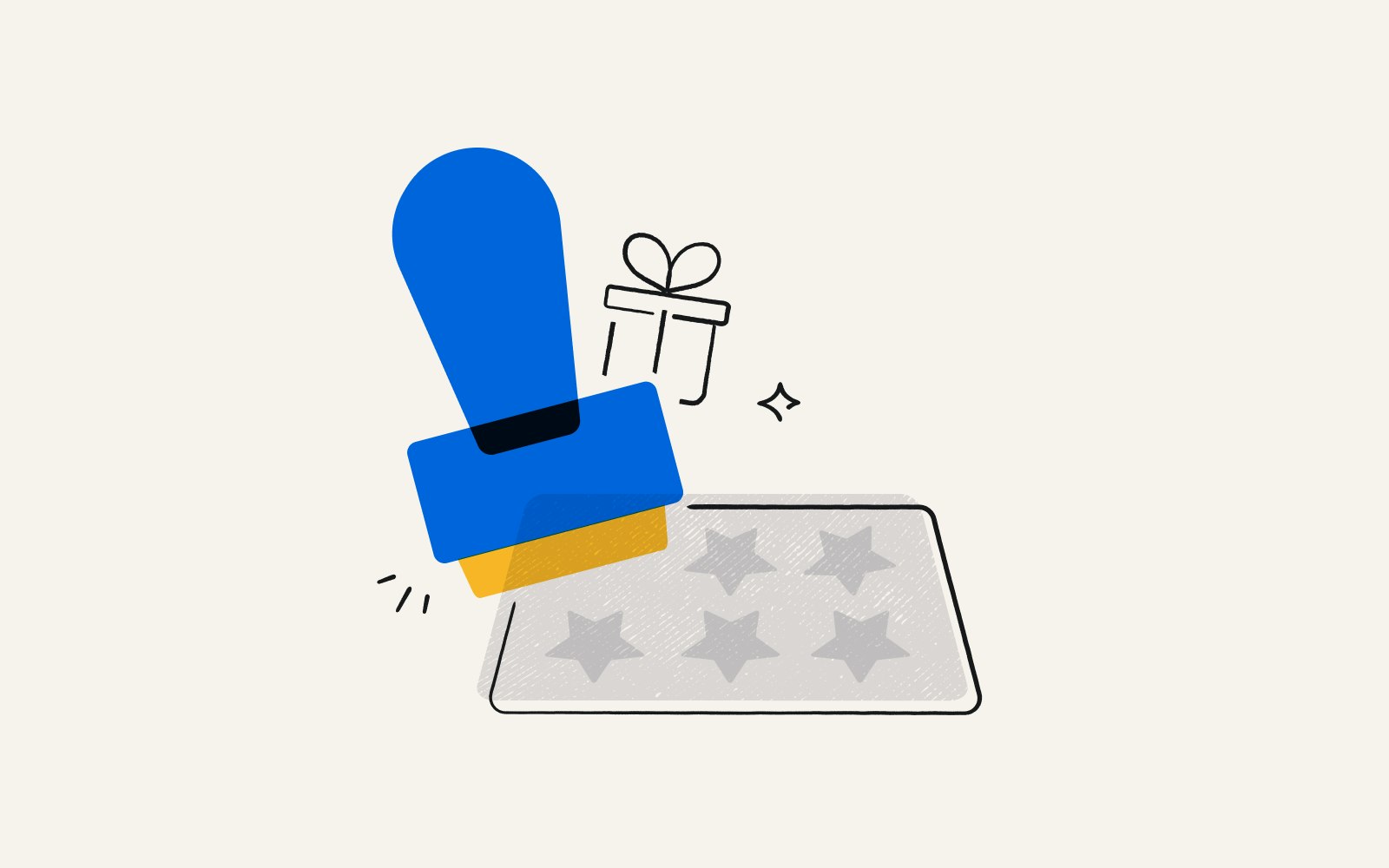Crafting memorable experiences: The role of emotional connections in loyalty programs
By Andrew Littlefield●5 min. read●Jul 28, 2025

Imagine this. It's your first time flying as a newly minted Delta Gold Medallion member, which means you now have Sky Priority status. You have access that means shorter lines and better boarding position, sure. But more than that, it means getting waved into the exclusive check-in counter tucked away from the other check-in areas, where you receive elite service and feel like a VIP.
That’s the power of emotional loyalty. And it’s why brands like Delta, Starbucks, and AmEx have built programs that people love, not just use. Yes, they offer tangible rewards. But they also deliver moments of identity, recognition, and surprise that hit us on a deeper level.
In short: they make us feel something.
The psychology behind brand loyalty
Humans often seek patterns, comfort, and predictability. In that sense, we’re naturally wired to be loyal to a brand. If something works for us, we’re inclined to keep using it.
But there’s more to loyalty than simple utility. In Alan Dick and Kunal Basu’s landmark marketing paper from 1994, the researchers proposed that being loyal to a brand means both liking it a lot and buying from it often. Just buying something over and over doesn’t mean you actually care about it — you might just have no other options. True loyalty comes from both your feelings and your actions.
“We all want others to care about us, but so often we fail to create conditions conducive to caring,” explains Jay Acunzo, a messaging and public speaking strategist for executives, marketers, and creators. “There's a word for that. Feelings. It's always, always about how we make others feel.”
We’d like to think customers are driven by logic — the “rational consumer.” In practice, brand loyalty lives in the same part of the brain that governs habit, reward, and emotion.
Dopamine loops: Checking your loyalty points balance, watching a rewards chart fill up. These hit the same systems social media does. It’s a slot machine effect.
Instant feedback: Delta updates Medallion status and miles in near real-time, creating a visible feedback loop that reinforces behavior.
Emotional identity: Loyalty programs work because they tap into self-perception. We don’t just fly Delta; we are Gold Medallion.
Brain scans back this up: fMRI (functional magnetic resonance imaging) scans show that “loyal customers had greater activation in the brain areas concerned with emotion and memory retrieval suggesting that loyal customers develop an affective bond with a particular brand, which serves as the primary motivation for repeat purchases.”
We'd like to think it's because we're "the best" at what we do, but really, that's not why people make choices. We're emotional creatures, not rational. We make subjective decisions, then rationalize what we did later. In other words, when your buyers make choices, they play favorites.
Jay Acunzo
Building blocks of emotional loyalty: key psychological principles
The science behind what makes us loyal is pretty straightforward. It’s not magic, just psychology. Here’s what to tap into:
Positive reinforcement & habit formation: Seeing rewards accumulate reinforces the desire to repeat behaviors. Neural pathways form and it quickly becomes a habit.
Endowment effect: People overvalue what they feel they already own, even if it’s unredeemed points or elite status.
Social identity theory: Feeling part of a group ("Sky Priority," "Gold Member") fulfills belonging needs. It’s a community, not a transaction.
Loss aversion: We fear losing status more than we value gaining it. Flying a non-partner airline feels like wasting potential progress.
Reciprocity principle: When someone does us a favor, we feel obligated to return it. Customer loyalty fits into this psychological model. If we have points or status, we feel inclined or even obligated to use it.
Personal touch: Small, unexpected gestures create a lasting impact. A barista remembering your name or a birthday surprise in your app notifications builds deeper connections than predictable, transactional rewards ever could.
Why emotional loyalty matters now more than ever
It’s important to pay attention to these powerful mechanisms, as over 80% of Americans are loyal to at least one brand, according to research by Capital One — often for reasons they can’t fully articulate. The average American consumer is enrolled in nearly 20 loyalty programs, with a 49% participation rate.
Loyal customers spend more, evangelize for brands, and drive recurring sales in a way that towers over non-loyal consumers.
Building a loyal fanbase helps brands overcome some of the biggest threats to their continued growth in a hyperactive media environment where consumer attention is being pulled in a million directions, along with their dollars.
The attention economy: With endless options, brands must win not just awareness, but affection.
Price wars: Discounts don’t build loyalty, they train people to expect lower prices.
Switching is frictionless: A few taps and your competitor has a new customer. Emotional loyalty is the only real moat.
Resilience: When things go wrong (delays, outages, mistakes) emotionally connected customers stick around.
Organic growth: People don’t recommend programs that give them 10 points. They recommend ones that make them feel seen.
“We have to meet people earlier in the buyer's journey, thinking less about transacting them to purchase something and more about transforming them to think and feel something,” says Acunzo. “That puts us in pole position to receive their dollars when they're at that stage.”
How do you track emotional engagement?
If you want to implement and grow a loyalty program, you’re going to need the numbers to justify investment. But some of these factors can feel a bit hard to pin down.
The challenge is that traditional metrics sometimes miss the emotional component. You can track purchases, points redeemed, and program enrollment all day long, but those numbers won't tell you if customers actually care about your brand or if they're just chasing the best deal.
The key is looking beyond transactional data to find signs of genuine emotional investment. Are customers engaging with your brand even when there's no immediate reward? Do they choose you over competitors offering better discounts? These behavioral patterns reveal more about emotional loyalty than any purchase frequency report.
Of course, your more traditional marketing and sales metrics also come into play here.
NPS: If someone is inclined to share your product or service with others, it stands to reason they’re going to keep coming back to your brand.
Sentiment analysis: Imperfect, but helpful. Combine with qualitative insights.
Behavioral indicators: Look for customers who stay loyal even when rewards aren’t maximized. That’s emotional commitment.
Common mistakes that break emotional connections
Brands often set out to create emotional loyalty, but undercut it by chasing the wrong things. Here are the most common mistakes:
"Buy more, get more" traps: When rewards feel purely transactional, customers don’t feel cared for, they feel managed. A program that only incentivizes more purchases might drive short-term revenue, but it rarely builds long-term loyalty. Customers will leave the second someone else offers a bigger discount.
Over-gamification: If everything becomes a badge or leaderboard, the sense of meaning starts to fade. Gamification only works when it reinforces real progress or community, not an empty gimmick.
Forced sentiment: There’s a fine line between warm and weird. When brands try to manufacture emotional connection with over-the-top thank yous, and insincere personalization, it often backfires. Customers can tell when something is genuine versus when it’s scripted. Authenticity always wins.
Inconsistent messaging: If your loyalty email is heartfelt, but your customer service rep sounds robotic, the emotional illusion breaks. Every customer touchpoint has to align. Emotional loyalty is fragile; don’t let disjointed experiences unravel it.
Neglecting the basics: No matter how moving your message is, it won’t matter if your app is buggy or your product shows up late. Emotional connection must be built on a foundation of reliability. Get the fundamentals right before layering on feelings.
What's next: The future of customer loyalty
Loyalty programs are entering a new era. As technology advances and customer expectations shift, the challenge becomes delivering rewards in a way that still feels personal. Program mechanics are becoming more sophisticated, but emotional connection will remain the key differentiator.
The best loyalty strategies of the future will focus less on what brands offer, and more on how those offers make people feel.
AI-powered personalization: More relevant touchpoints, without creeping people out.
Immersive virtual experiences: Loyalty onboarding, live streams, metaverse-esque events.
Zero-party data: Earned data builds trust and tailors better experiences.
Coalition loyalty: Multiple brands teaming up (e.g., airlines + hotels + cards).
Next-gen expectations: Gen Z and Alpha care about values. Programs must evolve.
Get the ball rolling this week by trying to score some quick wins. Layups help build momentum, so start simple.
Send genuine thank-you notes to top customers. Skip the pitch, focus on gratitude.
Audit your top 10 customer interactions. Which created emotional reactions?
Interview a loyal customer. Ask: "What do you feel when you interact with us?"
Loyalty is a long game
When you tap into the psychology of belonging, status, and surprise, you create more than a points system. You create an emotional contract. One that customers feel invested in and proud to be part of. The tactics will change. The tech will evolve. But the brands that endure will always be the ones that make people feel something.
The difference between a forgettable rewards program and one that inspires genuine loyalty comes down to this: stop thinking about what you're giving your customers and start thinking about how you're making them feel.
Because in the end, people don't stay loyal to points or perks. They stay loyal to brands that understand them, recognize them, and make them feel like they belong. That's the kind of loyalty no competitor can steal away.


